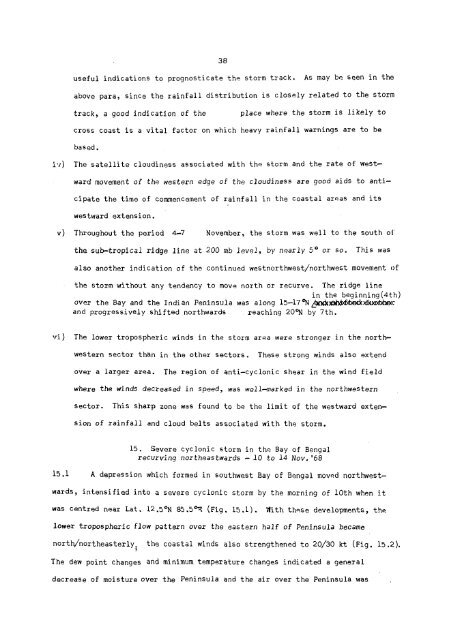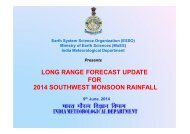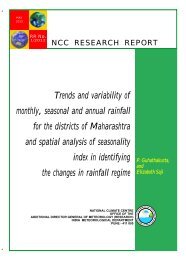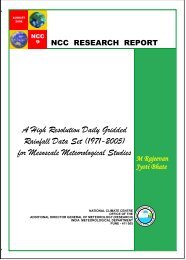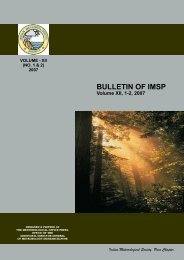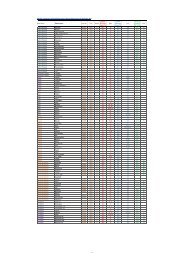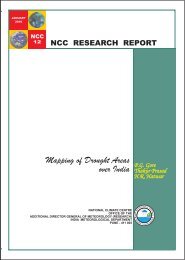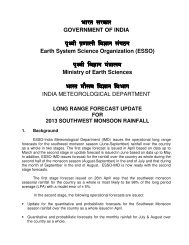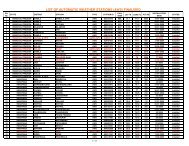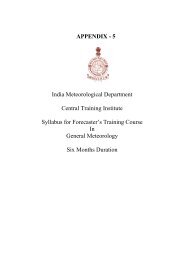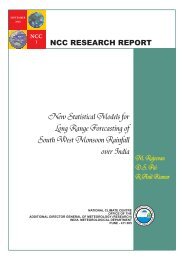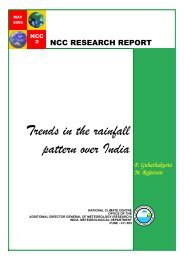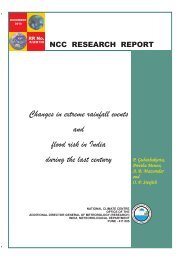Create successful ePaper yourself
Turn your PDF publications into a flip-book with our unique Google optimized e-Paper software.
38<br />
useful indications to prognosticate the storm track. As may be seen in the<br />
above para, since the rainfall distribution is closely related to the storm<br />
track, a good indication of the<br />
place where the storm is likely to<br />
cross coast is a vital factor on which heavy rainfall warnings are to be<br />
based.<br />
iv) The satellite cloudiness associated with the storm and the rate of westward<br />
movement of the western edge of the cloudiness are good aids to anticipate<br />
the time of commencement of rainfall in the coastal areas and its<br />
westward extension.<br />
v) Throughout the period 4—7 <strong>No</strong>vember, the storm was well to the south of<br />
the sub-tropical ridge line at 200 mb l e v e l , by n e a r l y 5° or s o . This was<br />
also another indication of the continued westnorthwest/northwest movement of<br />
the storm without any tendency to move north or recurve. The ridge line<br />
in the beginning(4th)<br />
over the Bay and the Indian Peninsula was along 15—17°N<br />
and progressively shifted northwards reaching 20°N by 7th.<br />
vi) The lower tropospheric winds in the storm area were stronger in the northwestern<br />
sector than in the other sectors. These strong winds also extend<br />
over a larger area. The region of anti-cyclonic shear in the wind field<br />
where the winds decreased in speed, was well—marked in the northwestern<br />
sector. This sharp zone was found to be the limit of the westward extension<br />
of rainfall and cloud belts associated with the storm.<br />
15. Severe cyclonic storm in the Bay of Bengal<br />
recurving northeastwards -10 t o 14 <strong>No</strong>v. '68<br />
15.1 A depression which formed in southwest Bay of Bengal moved northwestwards,<br />
intensified into a severe cyclonic storm by the morning of 10th when it<br />
was centred near Lat. 12.5°N 85.5°E (Fig. 15.1). With these developments, the<br />
lower tropospheric flow pattern over the eastern half of Peninsula became<br />
north/northeasterly, the coastal winds also strengthened to 20/30 kt (Fig. 15.2).<br />
The dew point changes and minimum temperature changes indicated a general<br />
decrease of moisture over the Peninsula and the air over the Peninsula was


